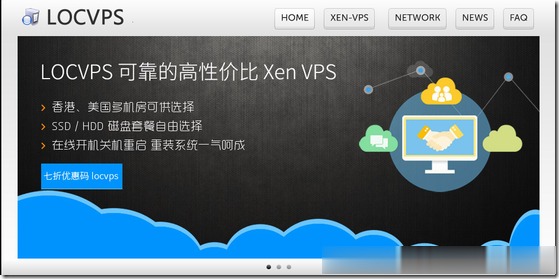剖析深度剖析xp的boot.ini(Depth analysis of XP boot.ini)
深度剖析xp的boot. ini Depth analysis of XP boot. iniThere are more than one operating system installed on thecomputer friends know, in computer power on self test after theemergence of a start menu, which lists the installed on thiscomputer, all of the operating system, users use the "arrow""down" button can choose to enter the system. In fact, it allcomes from a file called BOOT. INI, which has existed in theWindows system since Windows NT started. The Windows XP reliesprimarily on the BOOT. INI file to determine the selectedoperating system categories that the computer displays duringthe reboot (boot) process. In general, it is located in the rootdirectory of C, by default is a hidden read-only systemconfiguration files. To view it, as long as the hidden attributeis removed, use Notepad to open it, you can also"start" in theoperation of msconfig. exe, in the pop-up"system configurationutility dialog box, click the" BOOT. INI "tab, you can get aglimpse of the true face of Mount Lu. Here on the author' scomputer BOOT. INI file, for example, to explain in detail.The common formats for BOOT. INI files are as follows:[boot loader]
Timeout=30
Default=multi (0) disk (0) rdisk (0) partition (1) \WINDOWS[operating systems]
Multi (X) , disk (Y) , rdisk (Z) , partition (Q) , \WINDOWS=,Microsoft, Windows, XP, Professional, /fastdetect
SCSI (X) , disk (Y) , rdisk (Z) , partition (Q) , \WIN98=,Microsoft, Windows 98, /fastdetect
The file is divided into two parts, Boot, loader (boot loader)and Operating systems (operating system) . In the boot loadsection, the timeout=xx indicates the time the user is waitingto select the operating system. The default is 30 seconds, andthe user can change it as needed. The default=xxxx indicatesthe default operating system path that the system defaults toloading, showing the wait for the highlight section selectedby the user when it is started. But what puzzles many users iswhat do those "multi (0) disk (0) rdisk (0) partition (1)"mean?In fact, this is named after the ARC rule, which is a commonway of identifying devices in x86 or RISC computers. The ARCname refers to the partition that holds the operating systemfile. For the disk device, the ARC name is constructed asfollows:
(X) disk (Y) , rdisk (Z) , partition (Q)
The component section has two valid values, namely multi andSCSI, which are used to mark the hardware adapter. Multirepresents a non SCSI hard disk or a SCSI hard disk that isaccessed by SCSI BIOS, while SCSI represents a SCSI BIOSforbidden SCSI hard disk. The X value indicates the serialnumber on the same disk controller where the disk where the OS' ssystem root directory is located (X starts at 0) .
Disk (Y) for the SCSI hard disk, Y said in the same disk
controller on the hard drive serial numberwhere the systemrootof the operating system partition where the hard disk (Y startfrom 0) ; for multi, Y values have no meaning, constant is 0.Rdisk (Z) : the multi, Z said in the same number of hard diskcontroller on the system root of the operating system partitionwhere the hard disk (Z start from 0) ; for the SCSI hard disk,the Z value is meaningless, the constant of 0.
The partition (Q) :Q value indicates the partition number of theoperating system' s root directory on the same hard disk, theordinal number of the primary partition (Q starts at 1) .The Operating systems section lists the paths and lists of allthe operating systems on this computer, including some switchessuch as /fastdetect, /basevideo, and/sos. These switches havespecial meanings and are generally advised not to be changed.OK, based on the above knowledge, we should have a clearunderstanding of the BOOT. INI file. So we can modify it asneeded. With the computer as an example, BOOT. INI documentsshow that two Windows XP professional edition system with harddisk (actually a Chinese version, a English version) , thedefault is to start the systempartition on the hard disk third(English version) . If you want it to start the system on thefirst partition of the hard disk (Chinese version) by default,and to mark the difference, mark the two Windows, XP,Professional, respectively. At this point, we can modify theBOOT. INI file to achieve its purpose, as shown in figure 2.Restart your computer and see if your wish is fulfilled!
From the above we can see that BOOT. INI is a very importantsystem file, without it, the system will not be able to boot,so we usually need to make a necessary backup to it, but alsoedit it. Especially when installing multiple systems,The file is often corrupted if there is no installation orderfrom low to high (Windows 98, Windows 2000, Windows, XP, andWindows 2003) . If we master the way to edit and edit it, we won'tbe able to do anything.
- 剖析深度剖析xp的boot.ini(Depth analysis of XP boot.ini)相关文档
- 硬盘双系统BOOT.INI设置问题
- 文件如何对win7电脑中的Boot.ini文件进行修改
- 操作系统启动设置boot.ini详细解释
- 消息BOOt.ini文件错误引起系统无法启动的解决方法
- 输入ini启动文件—专门管理多操作系统的启动。Boot.ini文件损
- 文件遇到boot.ini非法或者boot.ini无效怎么办
个人网站备案流程及注意事项(内容方向和适用主机商)
如今我们还有在做个人网站吗?随着自媒体和短视频的发展和兴起,包括我们很多WEB2.0产品的延续,当然也包括个人建站市场的低迷和用户关注的不同,有些个人已经不在做网站。但是,由于我们有些朋友出于网站的爱好或者说是有些项目还是基于PC端网站的,还是有网友抱有信心的,比如我们看到有一些老牌个人网站依旧在运行,且还有新网站的出现。今天在这篇文章中谈谈有网友问关于个人网站备案的问题。这个也是前几天有他在选择...

LOCVPS:VPS主机全场8折,德国/荷兰/美国KVM终身7折
LOCVPS发来了针对元旦新年的促销活动,除了全场VPS主机8折优惠外,针对德国/荷兰KVM #1/美国KVM#2 VPS提供终身7折优惠码(限量50名,先到先得)。LOCVPS是一家成立于2012年的国人VPS服务商,提供中国香港、韩国、美国、日本、新加坡、德国、荷兰、俄罗斯等地区VPS服务器,基于KVM或XEN架构(推荐优先选择KVM),均选择直连或者优化线路,国内延迟低,适合建站或远程办公使...

GigsGigsCloud($26/年)KVM-1GB/15G SSD/2TB/洛杉矶机房
GigsGigsCloud新上了洛杉矶机房国际版线路VPS,基于KVM架构,采用SSD硬盘,年付最低26美元起。这是一家成立于2015年的马来西亚主机商,提供VPS主机和独立服务器租用,数据中心包括美国洛杉矶、中国香港、新加坡、马来西亚和日本等。商家VPS主机基于KVM架构,所选均为国内直连或者优化线路,比如洛杉矶机房有CN2 GIA、AS9929或者高防线路等。下面列出这款年付VPS主机配置信息...

-
百度k站被百度k站之后你一般是怎么处理的中国电信互联星空中国电信互联星空是什么!怎么取消微信如何建群微信可以建立两个人的群吗?有一个是自己pwpw域名的技巧不兼容手机软件与系统不兼容应该怎么办彩信中心移动的彩信中心是?主页是?收不到彩信,怎么设置?天天酷跑刷金币如何使用八门神器给天天酷跑刷钻刷金币畅想中国用“心系祖国情,畅想中国梦”为题目的800字作文怎么升级ios6iPad怎么升级到iOS6正式版?iphone6上市时间iphone6什么时候上市,价格是多少?